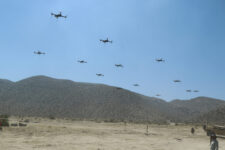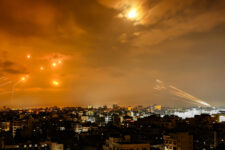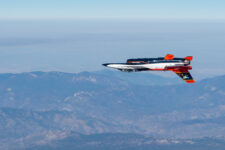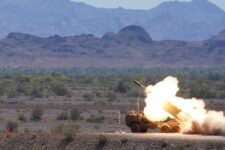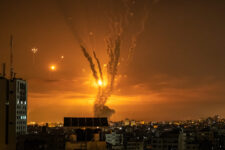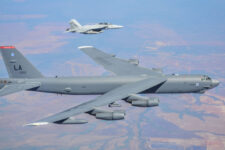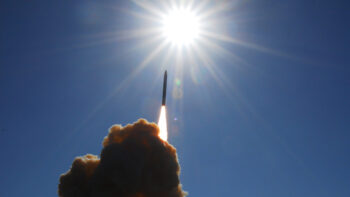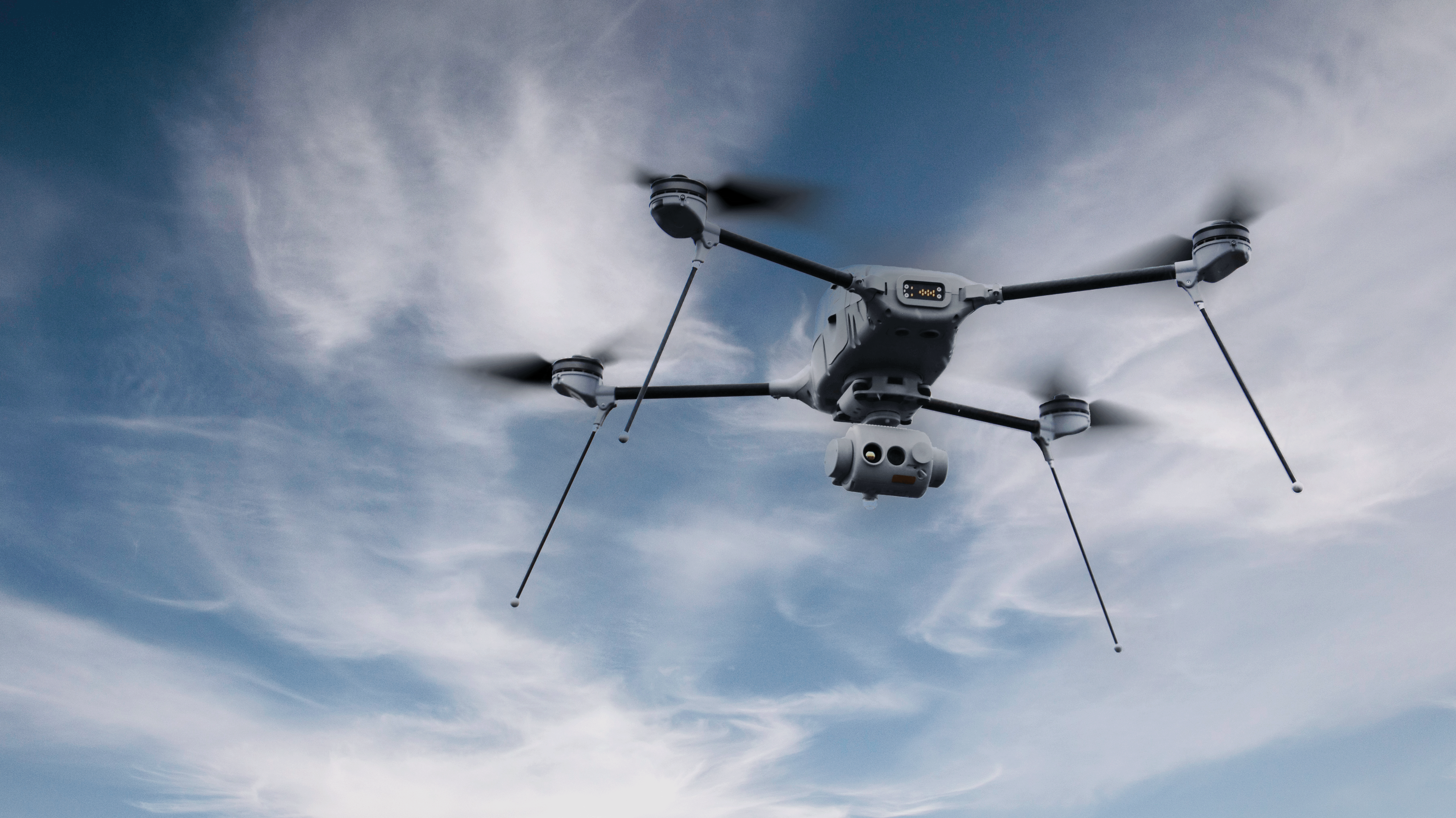
Mini drones like Indago, under contract with the British Army, could be under consideration for inclusion in a UK military aid drone package for Ukraine (UK MoD)
BELFAST — After making a £200 million ($253 million) promise to rush thousands of unmanned aerial systems to Ukraine, the United Kingdom is still working on “draw[ing] up” contracts with industry that would actually fill the order, the British military told Breaking Defense.
The package covering thousands of surveillance, long-range strike and maritime-based drones was first announced late last week by Prime Minister Rishi Sunak, as part of a wider £2.5 billion ($3.2 billion) military aid pledge to Kyiv for 2024 and 2025 that includes supplies of long-range missiles, air defence equipment and artillery ammunition.
The latest round of funding was approved in parallel with Sunak and Ukrainian President Volodymyr Zelensky, signing the landmark UK-Ukraine Agreement on Security Cooperation that formally commits London to supporting Kyiv’s security through continued intelligence sharing, cyber security support, military training and defense industrial co-operation, according to the UK government.
Described by London as the “largest delivery of drones to Ukraine from any nation,” the $253 million package will be “spent on a major push to rapidly procure and produce thousands of military drones… including surveillance, long-range strike and sea drones,” it revealed.
The announcement, however, came well before concrete plans have been made and contracts signed.
“It is very early stages at the moment, essentially this is an allocation of funding rather than something which has been drawn up in particular detail,” the spokesperson for the Ministry of Defence told Breaking Defense. “It’s almost like an announcement of intent to spend those funds on drones essentially … it’s not got to the point yet where [production] contracts have been drawn up or anything like that.”
As @RishiSunak visits Kyiv, we're stepping up our support to Ukraine.
Because the UK knows that Ukraine’s security matters to all of us.
A 🧵 on our new package of support. 1/6 pic.twitter.com/x8dkSRe0Sb
— UK Prime Minister (@10DowningStreet) January 12, 2024
The spokesperson added that “realistically” a number of people involved with approving an International Fund for Ukraine (IFU) drone package last year, would now be working on the new UAS supplies.
The IFU is led by the UK and was introduced to help international partners send additional weapons to Kyiv. A first IFU package, valued at more than £200 million ($253 million), covering drones, ammunition, air defense and electronic warfare equipment was agreed between Denmark, the Netherlands, Norway, Sweden and the UK in February 2023.
London previously said it would supply Kyiv with “hundreds of new long-range attack drones,” which surprised military analysts at the time because those type of aircraft are not held in regular inventory by the UK. In spite of that announcement, it still remains unclear if these systems have been transferred to Ukraine.
Despite the UK MoD not signing off on any orders for the latest drone package, aircraft likely to be under consideration are smaller size systems, particularly soldier-portable or “over the hill” drones similar to Teledyne FLIR Black Hornets or mini drones procured by the British Army in a £129 million ($163 million) acquisition last month, according to Mike Rowe, Global Practice Leader for Aerospace and Defense at Frost and Sullivan, a business consulting firm based in San Antonio, Texas.
The British Army contract, signed with Lockheed Martin UK, specifically covers 159 Indago 4 rotary wing UAS and 105 Stalker VXE30 fixed wing types, both due to enter service by the end of the year.
Drones continue to play a major role in the war in Ukraine, with those on the frontlines ranging from smaller systems weighing several pounds, quadcopters, to much more expensive aircraft like Turkey’s Bayraktar TB2 medium altitude long endurance (MALE) platform, estimated to cost at least $1 million.
The British Royal United Services Institute (RUSI) defense think tank estimated in May 2023 [PDF], that Ukraine was sustaining 10,000 UAV losses per month. It said that around 25 to 50 UAVs “from both sides” typically operate over a contested area covering a forward line of friendly forces and a forward line of enemy troops at “any given time for each 10km of frontage.”
Douglas Barrie, Senior Fellow for Military Aerospace at the UK-based International Institute for Strategic Studies (IISS) military think tank said, “The utilisation and loss rates for many of the classes of uninhabited systems is high — so additional numbers [like those approved by the UK] would I imagine be welcome by Kyiv.”
Air Force pauses ‘reoptimization’ planning as service awaits new leadership
“The Department of the Air Force welcomes the opportunity for our new leaders to assess all ongoing actions and ensure compliance with DoD directives,” an Air Force spokesperson said.

